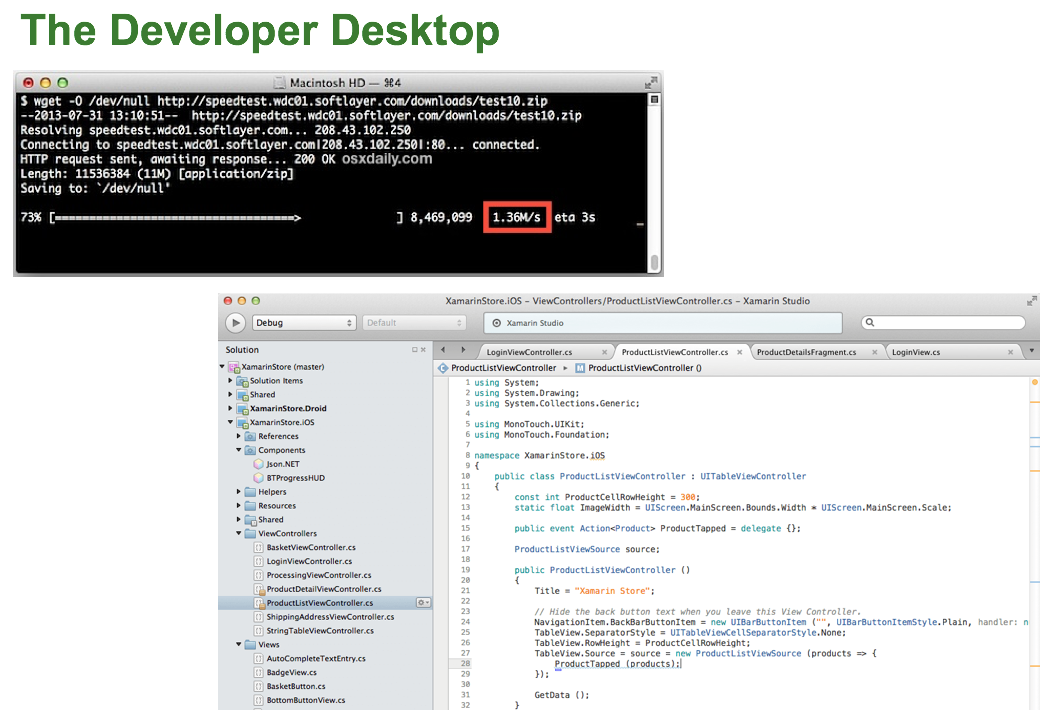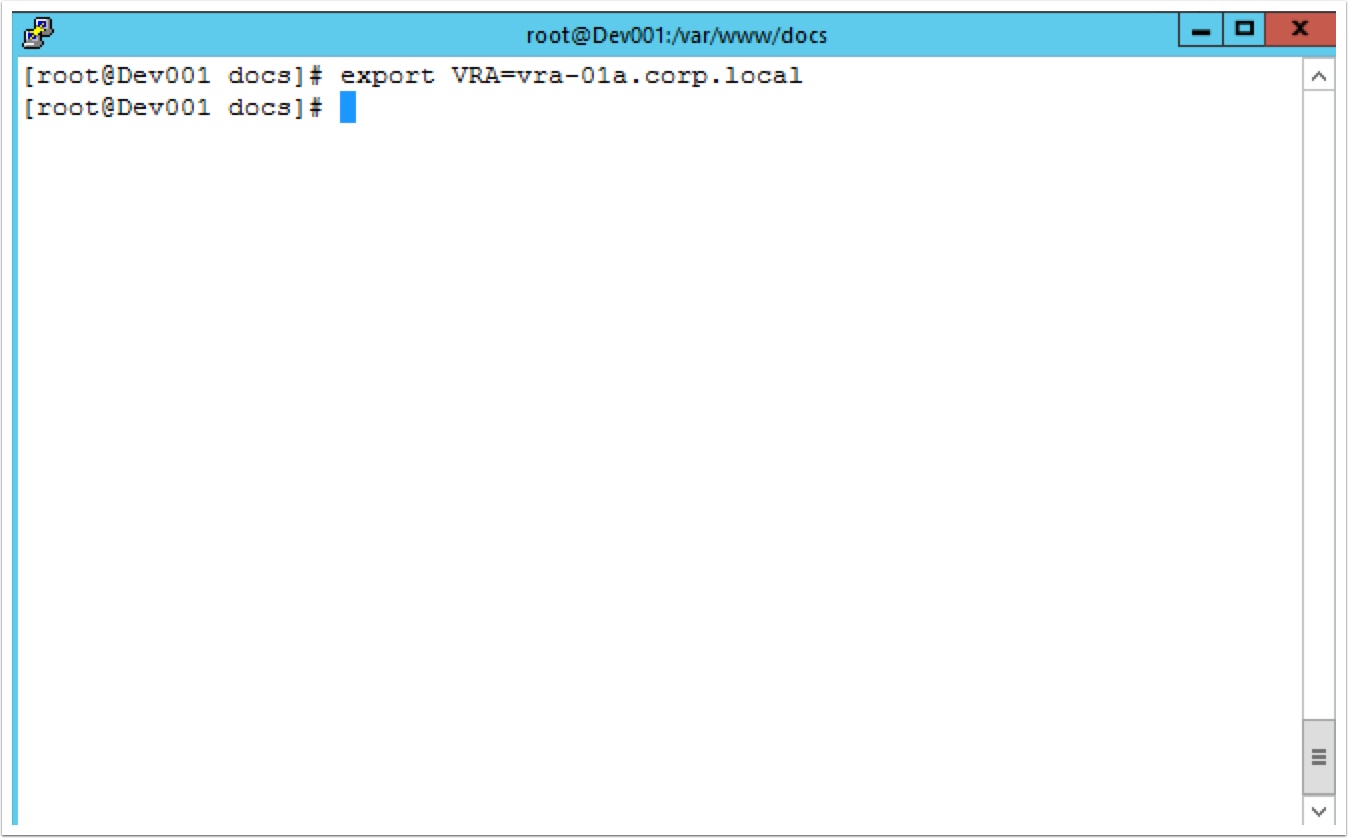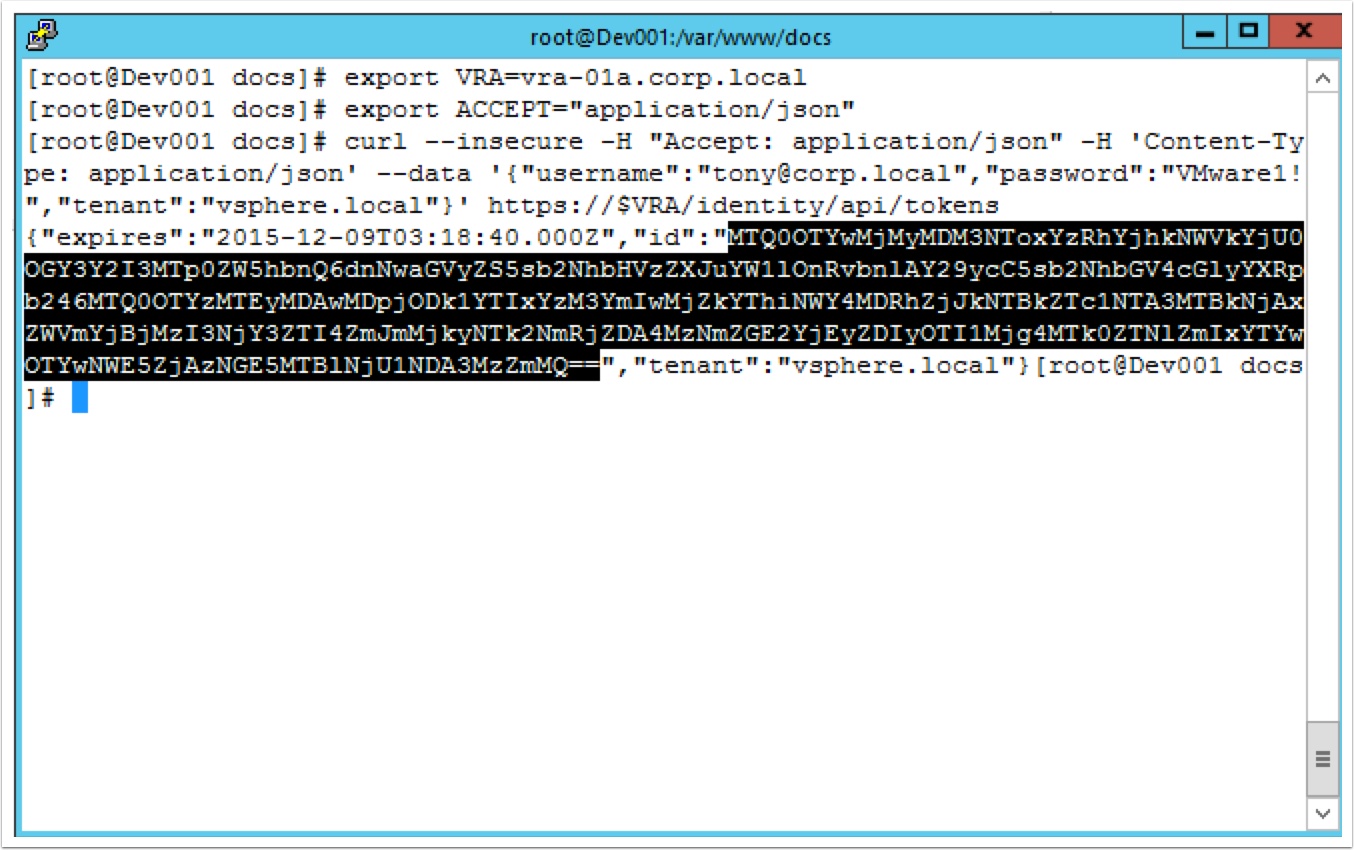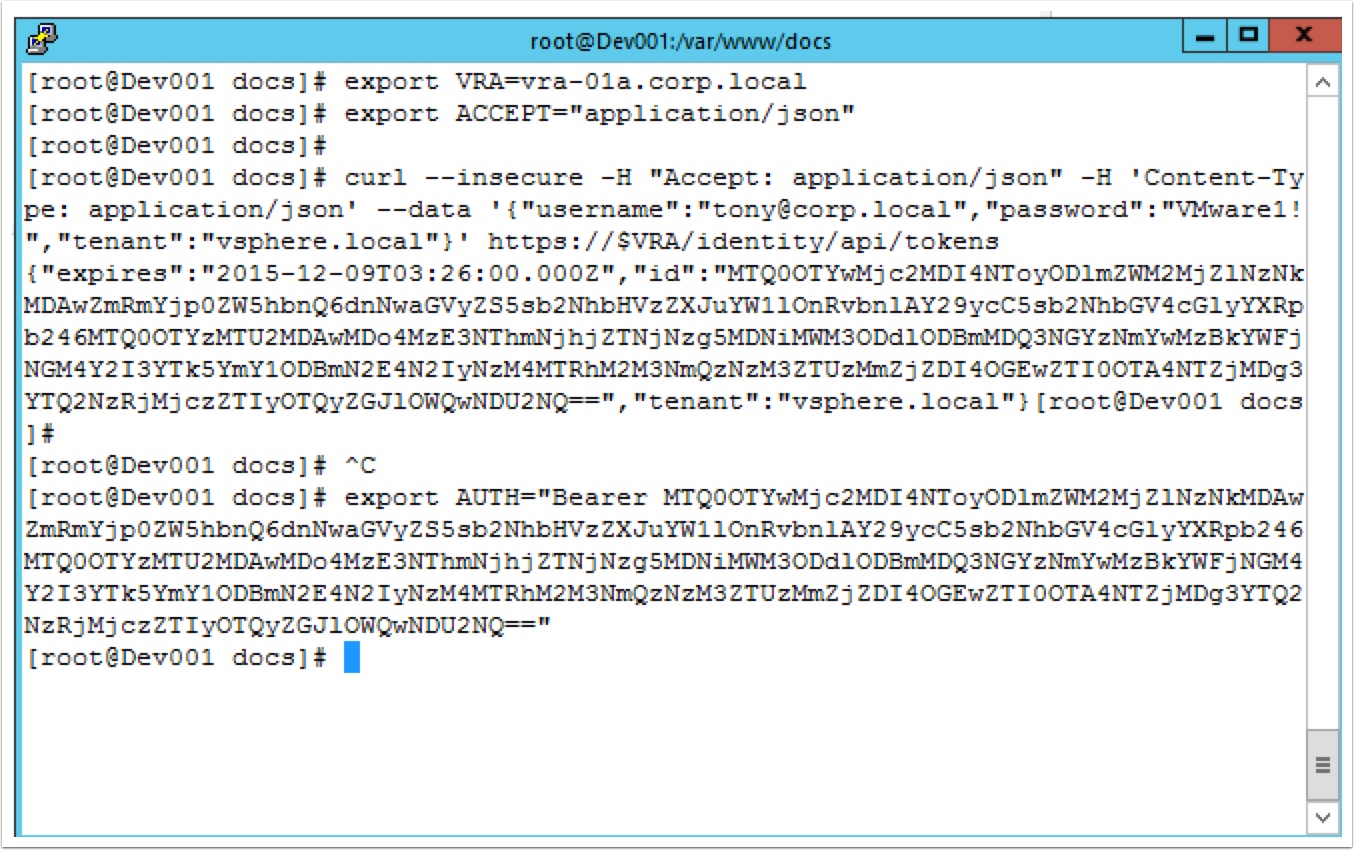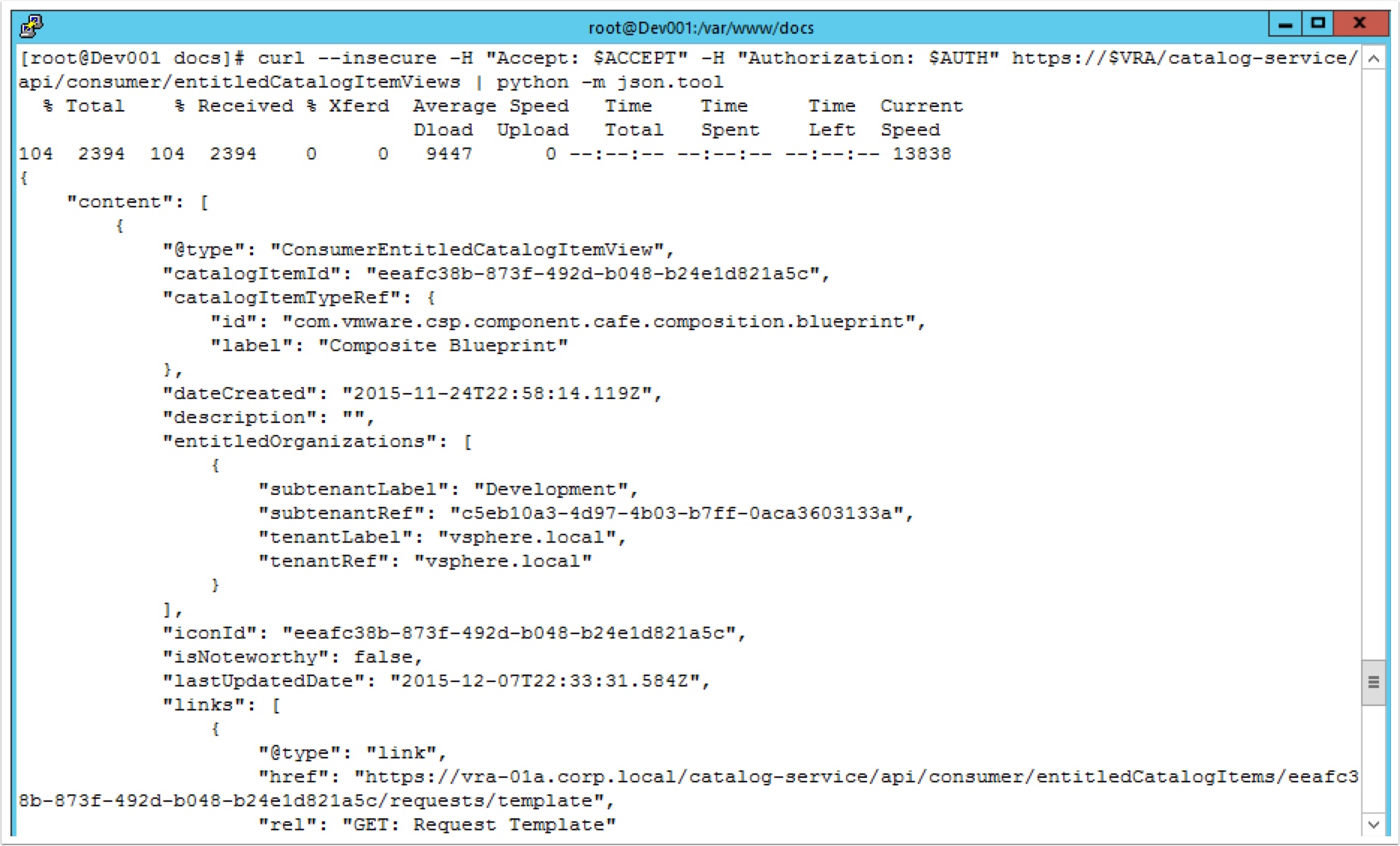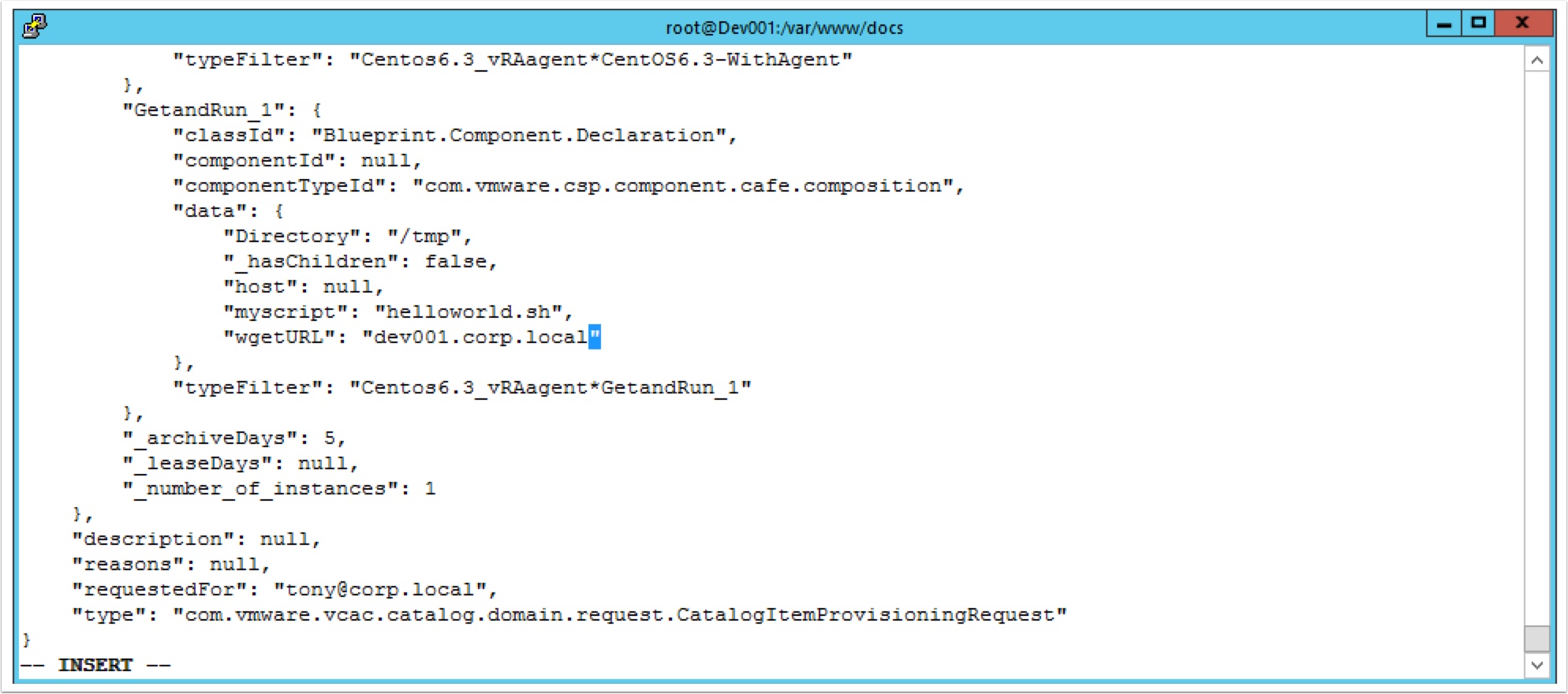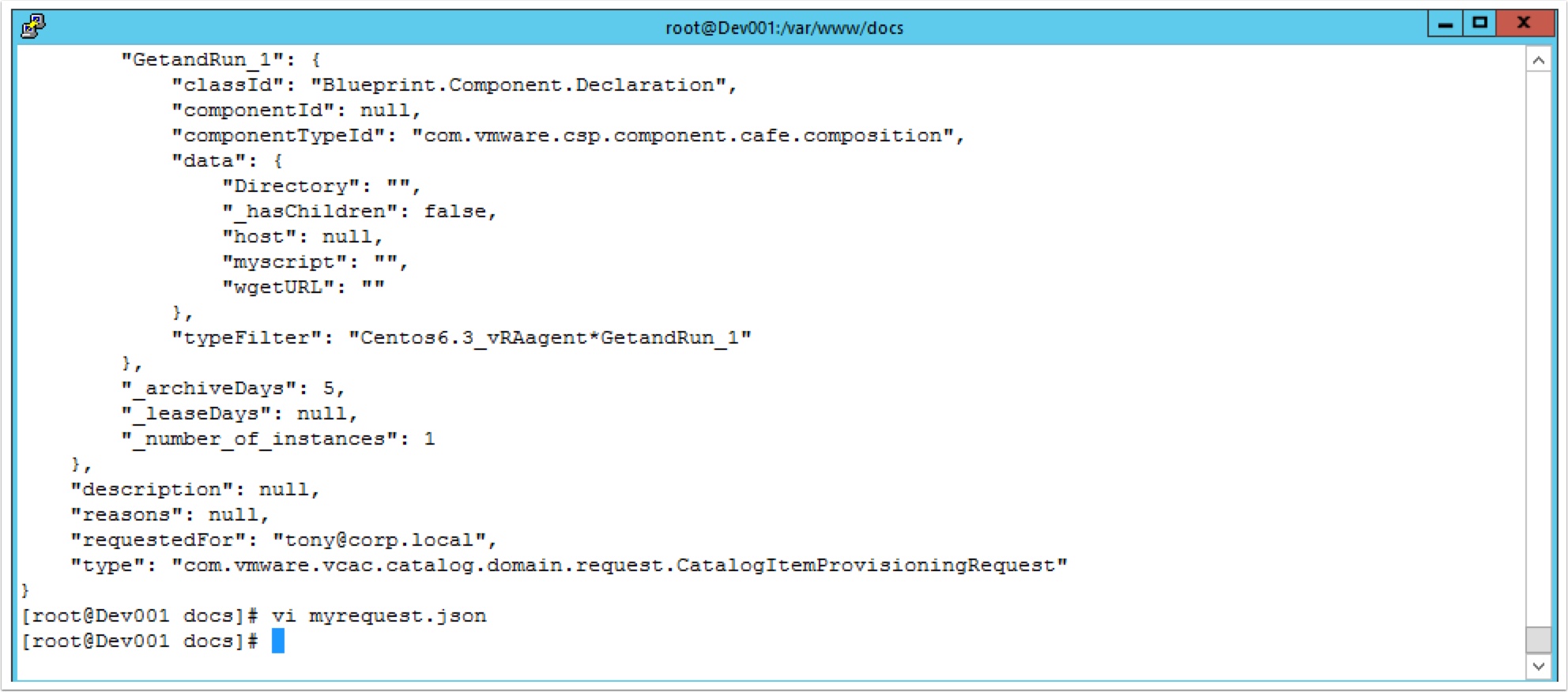In my last post I showed you how to create the developer friendly blueprint in vRealize 7. In this guide we will show how to invoke the REST API to make this request. Before we get into the details it helps to illustrate how each team wants to interact with the infrastructure. Many vSPhere admins, including myself, spend most of their time in some sort User interface. The developer on the other hand is usually living in command line or some sort of IDE environment writing code. For repetitive tasks such as server build they would rather code and script it once rather than going into a GUI to point and click. Developer also want a way to programmatically integrate their other build solutions like Jenkins for example.
Pre-Reqs:
- A working Developer Friendly Blueprint see my guide here
- A system with a command line that you can run curl from to connect to the vRealize Appliance API
- An account with access to provision the Developer Friendly Blueprint
Lets get started, first we will need to set some environment variables to save us time. Let’s export the vRA appliance host name.
export VRA=vra-01a.corp.local
Create variable for the HTTP Accept header, which tells the server what format you want the response to be in.

export ACCEPT="application/json"
Here we will authenticate by requesting a bearer token via a POST against /identity/api/tokens API, and we will store the bearer token in a variable so we can use it on future API invocations. This example passes user Tony’s credentials (vsphere.local tenant) with inline JSON, but you could also create variables or store this JSON in a file and use the file instead.
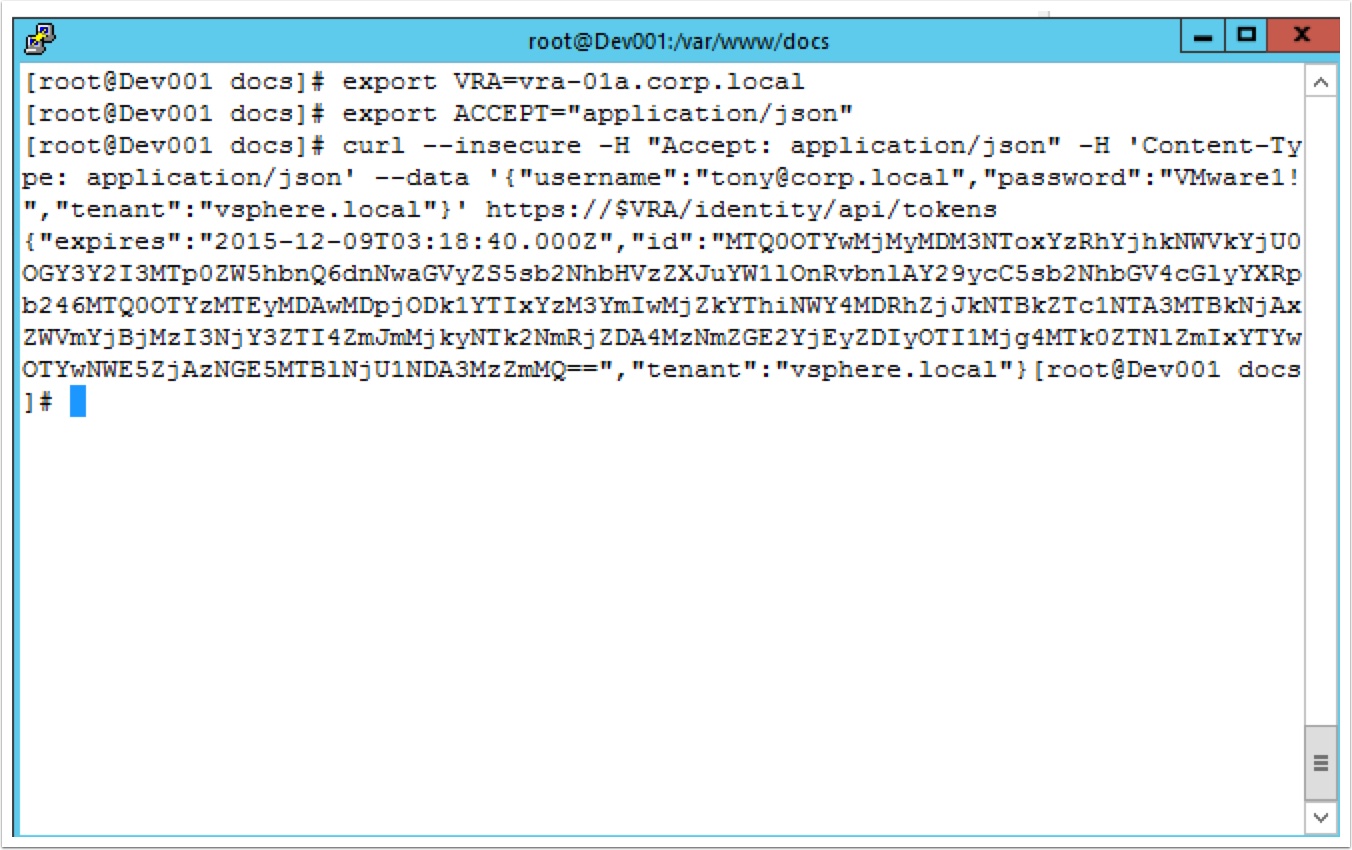
curl --insecure -H "Accept: application/json" -H 'Content-Type: application/json' --data '{"username":"tony@corp.local","password":"VMware1!","tenant":"vsphere.local"}' https://$VRA/identity/api/tokens
Now let’s grab the bearer token from the response above. Highlight all the text between the quotes as shown and copy it to the clip board
export AUTH="Bearer MTQ0OTYwMjc2MDI4NToyODlmZWM2MjZlNzNkMDAwZmRmYjp0ZW5hbnQ6dnNwaGVyZS5sb2NhbHVzZXJuYW1lOnRvbnlAY29ycC5sb2NhbGV4cGlyYXRpb246MTQ0OTYzMTU2MDAwMDo4MzE3NThmNjhjZTNjNzg5MDNiMWM3ODdlODBmMDQ3NGYzNmYwMzBkYWFjNGM4Y2I3YTk5YmY1ODBmN2E4N2IyNzM4MTRhM2M3NmQzNzM3ZTUzMmZjZDI4OGEwZTI0OTA4NTZjMDg3YTQ2NzRjMjczZTIyOTQyZGJlOWQwNDU2NQ=="
Now lets test connectivity by listing the entitled catalog items
Notice I add a pipe on the end of the command. This makes the JSON output more readable. | python -m json.tool
curl --insecure -H "Accept: $ACCEPT" -H "Authorization: $AUTH" https://$VRA/catalog-service/api/consumer/entitledCatalogItems | python -m json.tool
Ok, now that we have connectivity let’s find our catalog item and make a request. Enter the following to bring up the requests view
curl --insecure -H "Accept: $ACCEPT" -H "Authorization: $AUTH" https://$VRA/catalog-service/api/consumer/entitledCatalogItemViews | python -m json.tool
Now let’s locate the URL to get the request form for our CentOS6.3_vRAagent blueprint. Highlight the URL as shown and copy to the clipboard.
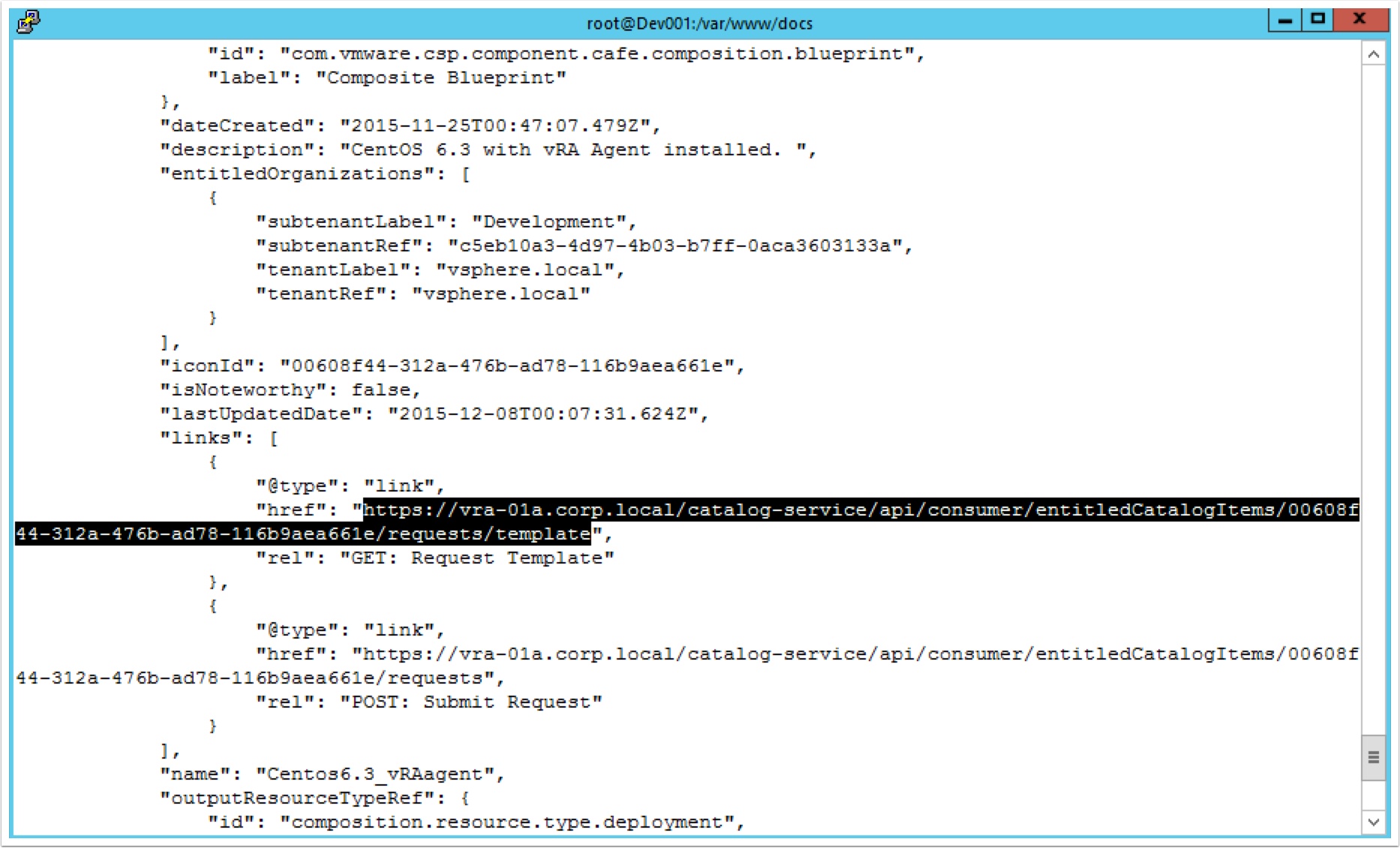
Now let’s get the required JSON content to create our request by submitting a curl request and sending the output to a json file
curl --insecure -H "Accept: $ACCEPT" -H "Authorization: $AUTH" https://vra-01a.corp.local/catalog-service/api/consumer/entitledCatalogItems/00608f44-312a-476b-ad78-116b9aea661e/requests/template | python -m json.tool > myrequest.json
Now open the myrequest.json file in the VI editor and click i to insert, scroll down to the GetandRun_1 section and notice the Directory, myscript and wgetURL sections. Fill them in as shown with your information
Now let’s create the request. We need the request URL so enter the following again and locate the request URL highlight it and copy to the clipboard
curl --insecure -H "Accept: $ACCEPT" -H "Authorization: $AUTH" https://$VRA/catalog-service/api/consumer/entitledCatalogItemViews | python -m json.tool
Now let’s create and invoke the request using the following and press enter Note: below the items in red that you will need to input for your environment.
Note: below the items in red that you will need to input for your environment.
curl --insecure -H "Accept: application/json" -H "Authorization: $AUTH" https://vra-01a.corp.local/catalog-service/api/consumer/entitledCatalogItems/00608f44-312a-476b-ad78-116b9aea661e/requests --data @myrequest.json --verbose -H "Content-Type: application/json" | python -m json.tool
You can use the following to view the requests
curl --insecure -H "Accept: $ACCEPT" -H "Authorization: $AUTH" https://$VRA/catalog-service/api/consumer/requests | python -m json.tool
Now that you can request a blueprint from the API as well as push scripts into that guest OS and run commands you can take it even further and create multiple requests ad link them together. For example if you wanted to create a multi-tiered app you could create a request for an Apache Web Server, Oracle DB and Tomcat server.
Enjoy and Happy coding.


